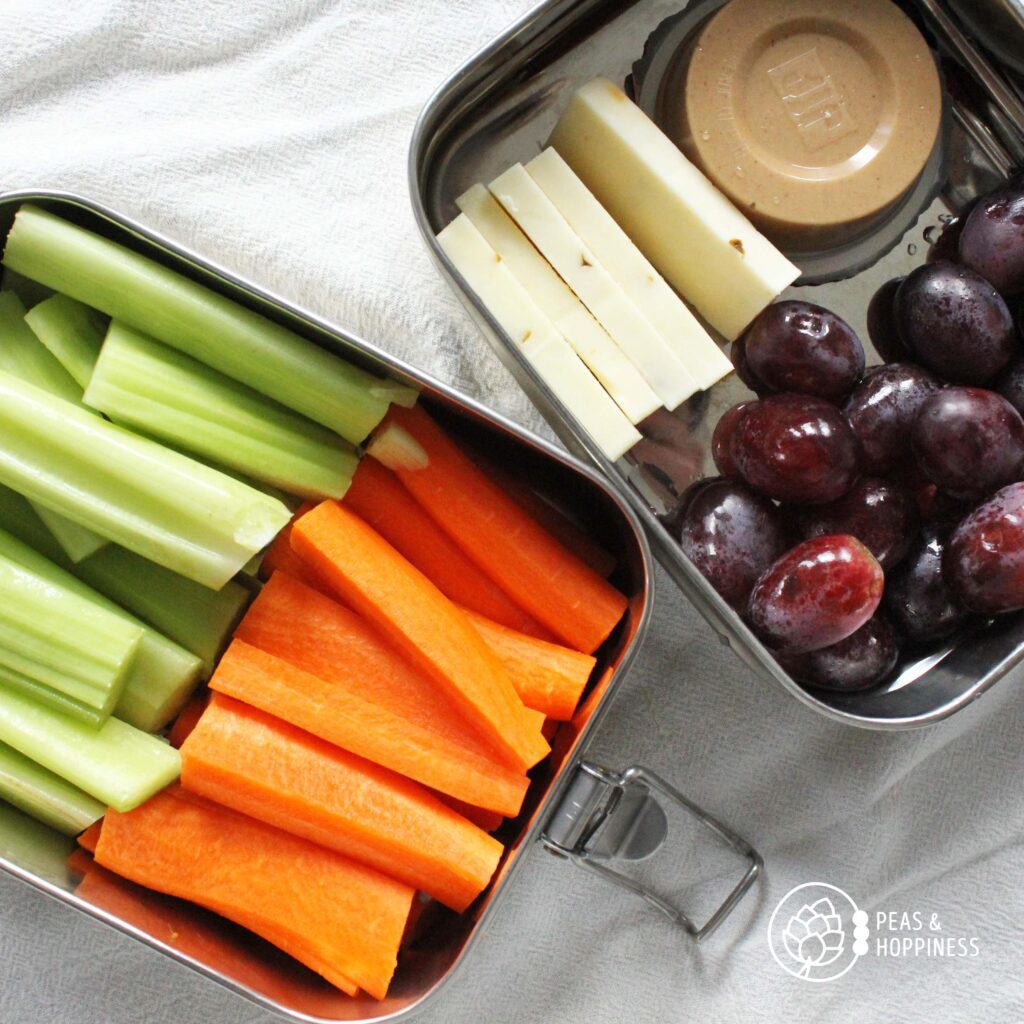Insulin Resistance: Causes, Symptoms, and Natural Ways to Improve Blood Sugar Balance
Insulin resistance is a common condition that can impact energy levels, hunger, and long-term health.
If left untreated, insulin resistance will eventually turn into prediabetes and type 2 diabetes. Improve insulin sensitivity with these simple lifestyle changes.
In this guide, we’ll cover what insulin resistance is, why it happens, and the best ways to support your body without extreme dieting.
What is Insulin Resistance?
 Insulin resistance is a term when the cells of the body don’t respond to the hormone insulin as well as they should. Insulin is a hormone that acts like a “key” to “unlock” cells and let glucose go from the blood stream into body cells for energy or storage.
Insulin resistance is a term when the cells of the body don’t respond to the hormone insulin as well as they should. Insulin is a hormone that acts like a “key” to “unlock” cells and let glucose go from the blood stream into body cells for energy or storage.
In insulin resistance, this process doesn’t work as well. Instead of the insulin “key” unlocking the cell on the first try, the cell doesn’t respond.
Because the body likes to keep blood sugar levels in a very tight range, the pancreas produces more insulin to try and get one of the “keys” to work. When this is happening, your blood sugars *look* totally normal… but in reality, your body is working extra hard to keep them normal, and it can’t keep up with this forever.
As time passes, the pancreas eventually won’t be able to keep up with the extra insulin demands and you’ll start to see blood sugars creep outside the normal range. Not necessarily all the time – but especially with high carbohydrate meals that aren’t balanced with other nutrients.
The best thing you can do is to change the way you eat and move to make it easier on your pancreas. This will extend its life to the longest possible.
How Do You Get Insulin Resistance?
Your risk for having insulin resistance is based on several factors, including genetics, lifestyle, medical conditions, and even some medications like chronic use of corticosteroids.
Your risk of insulin resistance is higher if you have PCOS (poly-cystic ovarian syndrome), a family history of type 2 diabetes, a personal history of gestational diabetes, lack of physical activity, or an apple-shaped body type. If you’re a woman, your risk increases in perimenopause.
How Can you Treat Insulin Resistance Naturally – Without Medication?
What you eat, how you move, and how you manage your stress and sleep all affect your blood sugar and insulin levels.
These are some of the biggest factors you can change to improve your insulin sensitivity:
Balance Your Meals with Carbohydrates for Better Blood Sugar
 Although low-carb and ketogenic diets have become popular for balancing blood sugar, you don’t have to cut out all carbohydrates to balance your blood sugar.
Although low-carb and ketogenic diets have become popular for balancing blood sugar, you don’t have to cut out all carbohydrates to balance your blood sugar.
What really matters is balanced nutrition.
Carbohydrates are your body’s main source of energy and are found in starches and sweets. When you eat carbs, your body breaks them down into glucose. Glucose is then absorbed into the bloodstream, thus raising your “blood glucose” – or “blood sugar” levels after you eat.
The more carbohydrates you eat at one time, the higher your blood sugar level will rise. Spread meals and snacks throughout the day instead of waiting for hours to eat – which can lead to excess hunger, overeating, and a higher blood sugar spike.
When you eat carbohydrates, pairing them with protein, fiber, and fat slows down glucose absorption which reduces blood sugar spikes and crashes.
Tips to Balance Carbohydrates
✅ Pair carbs with protein, fat, or fiber (e.g., whole grain toast with eggs and avocado).
✅ Focus on fiber-rich carbs like beans, lentils, veggies, and whole grains.
✅ Spread carbs throughout the day and tune into your hunger cues to know when and how much to eat
Add Strength Training and Cardio Exercise to Help Treat Insulin Resistance
Muscles use glucose as their favorite source of energy, so strength training and cardio exercise can be very helpful to improve insulin sensitivity.
Strength training increases muscle mass, thus it makes your body more sensitive to insulin in general. Cardio exercise uses glucose from the blood, so the optimal time to do cardio for blood sugar control is right after a meal when blood sugar levels are highest.
Tips for Exercise for Insulin Resistance
✅ Add in 2-3 strength training sessions per week (bodyweight, resistance bands, or weights all count)
✅ Focus on compound movements like squats, lunges, and push-ups
✅ For the biggest “bang for your buck” in terms of cardio, walk after meals to help lower blood sugar

Manage Stress and Optimize Sleep for Improved Insulin Sensitivity
 When you’re stressed or tired your body produces more cortisol, a stress hormone that raises blood sugar and over time can worsen insulin resistance.
When you’re stressed or tired your body produces more cortisol, a stress hormone that raises blood sugar and over time can worsen insulin resistance.
Studies show that even just one night of poor sleep can cause insulin resistance the next day. However, you can reverse this fairly quickly by getting back to a full eight hours of quality sleep for a few nights in a row.
While it’s not always realistic to get rid of stress, you can teach your body to move back into your sympathetic nervous system (“rest and digest”) by using simple breathing techniques. Try Square Breathing or 4-7-8 Breathwork to shift your nervous system back to rest.
Also keep in mind that fasting for long periods of time can increase stress hormones as the body regulates blood sugar levels. While 12-16 hours of fasting overnight has shown to improve blood sugar, longer than this is not necessarily helpful in the long-term.
Tips for Managing Sleep and Stress
✅ Prioritize sleep (aim for 7-9 hours per night).
✅ Try breathwork, meditation, or short walks to lower cortisol.
✅ Fuel your body consistently—skipping meals can increase stress hormones.
Simplify Meal Planning for Blood Sugar Balance and Insulin Sensitivity
 One of the easiest ways to improve insulin sensitivity is to plan balanced meals ahead of time so you’re not stuck making last-minute food choices that spike blood sugar.
One of the easiest ways to improve insulin sensitivity is to plan balanced meals ahead of time so you’re not stuck making last-minute food choices that spike blood sugar.
That’s exactly why I created the Peas & Hoppy Meal Guides app—to take the guesswork out of meal planning while keeping blood sugar in check.
As a Registered Dietitian and Certified Diabetes Care and Education Specialist for over a decade, I’ve designed each meal plan to include quality carbohydrates in a balance with protein, fat, and fiber to keep you full and satisfied all day long.
Bonus – I’m also a busy mom, so the recipes are easy and family-friendly!
With the Peas and Hoppy Meal Guides app, you get:
✔ Balanced, blood sugar-friendly meals planned for you each week
✔ Easily adjust for picky eaters, gluten-free, dairy-free, or plant-based needs
✔ Smart grocery lists that sync with Instacart
Treating insulin resistance and optimizing blood sugar levels doesn’t mean you need to cut out carbs or follow extreme diets. Small, sustainable habits like balancing your meals, adding in strength training, and focusing on sleep and stress management can make a big difference.
Ready to make blood sugar-friendly eating easier than ever? Try the Peas & Hoppy Meal Guides FREE for 7 days.
Happy balanced blood sugars,
Dietitian Ann
Balanced Blood Sugars with Every Meal
The Peas and Hoppy Meal Guides app takes the guesswork out of blood sugar control by sending you fresh, new meals planned every week by a registered dietitian. Love the food you eat while taking control of your blood sugar!
“The Peas and Hoppy Meal Guides app helps us live a better life because we’re making sure we get the nutritious food to eat that we need.”
– Kathy Colaiacovo, member of the Peas & Hoppy Meal Guides
